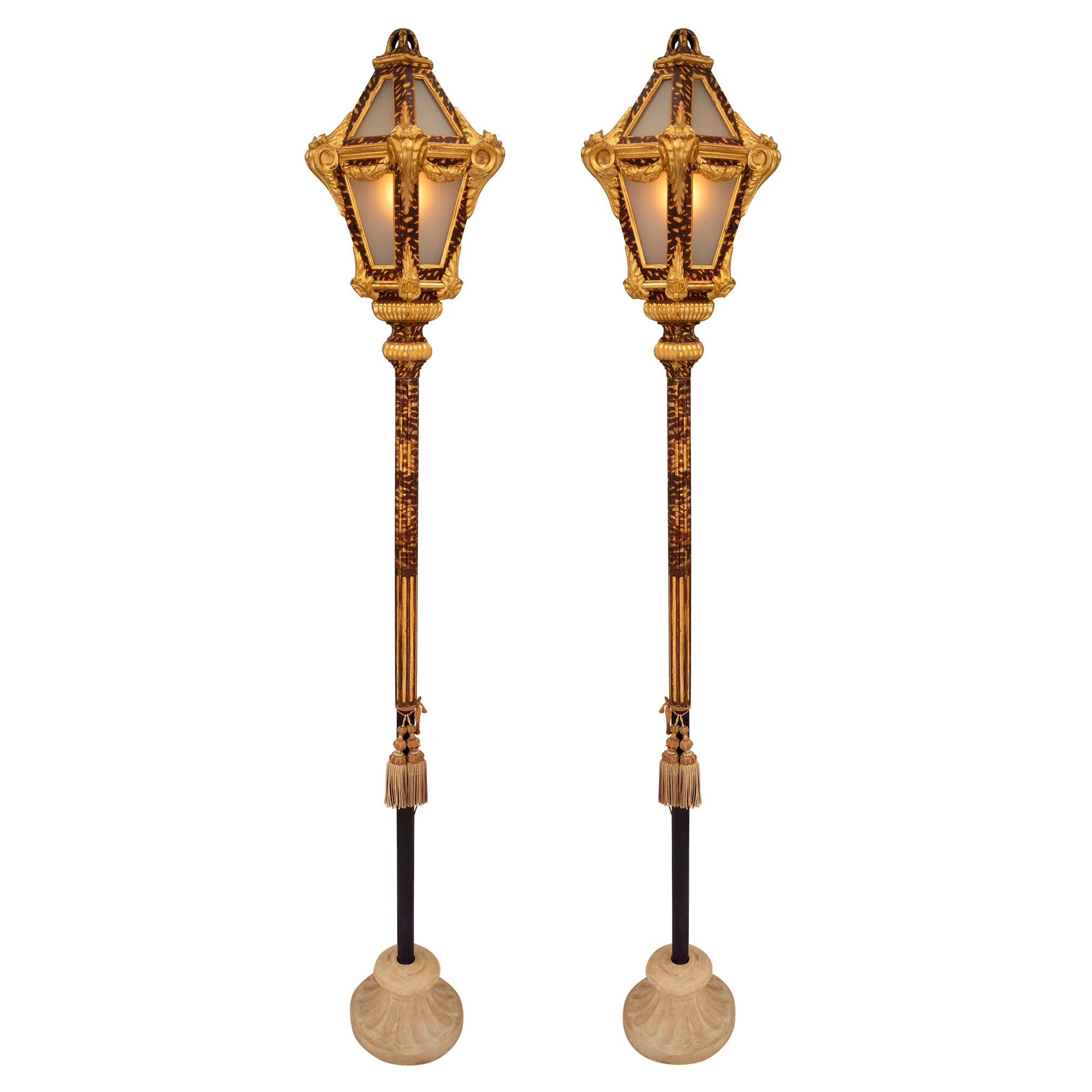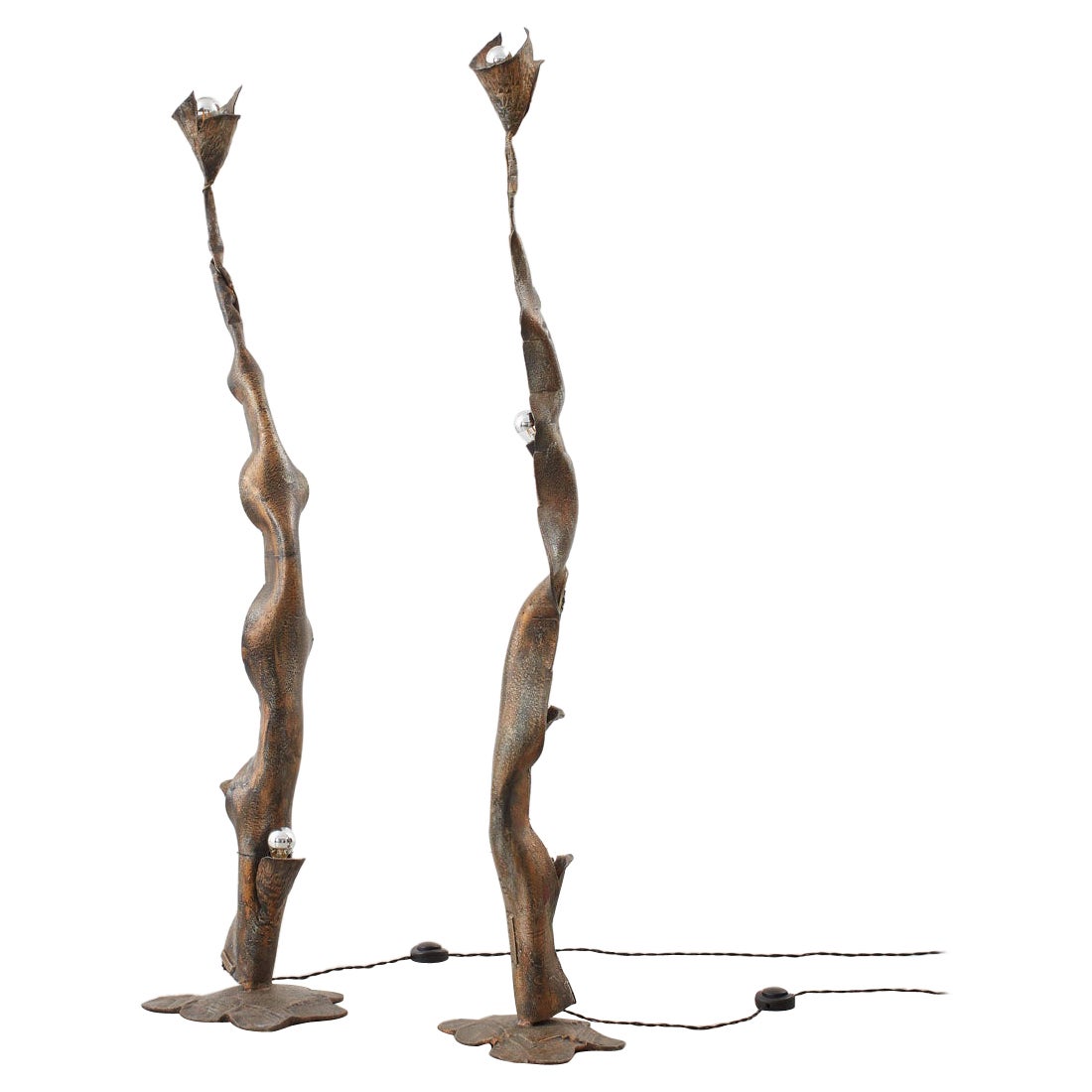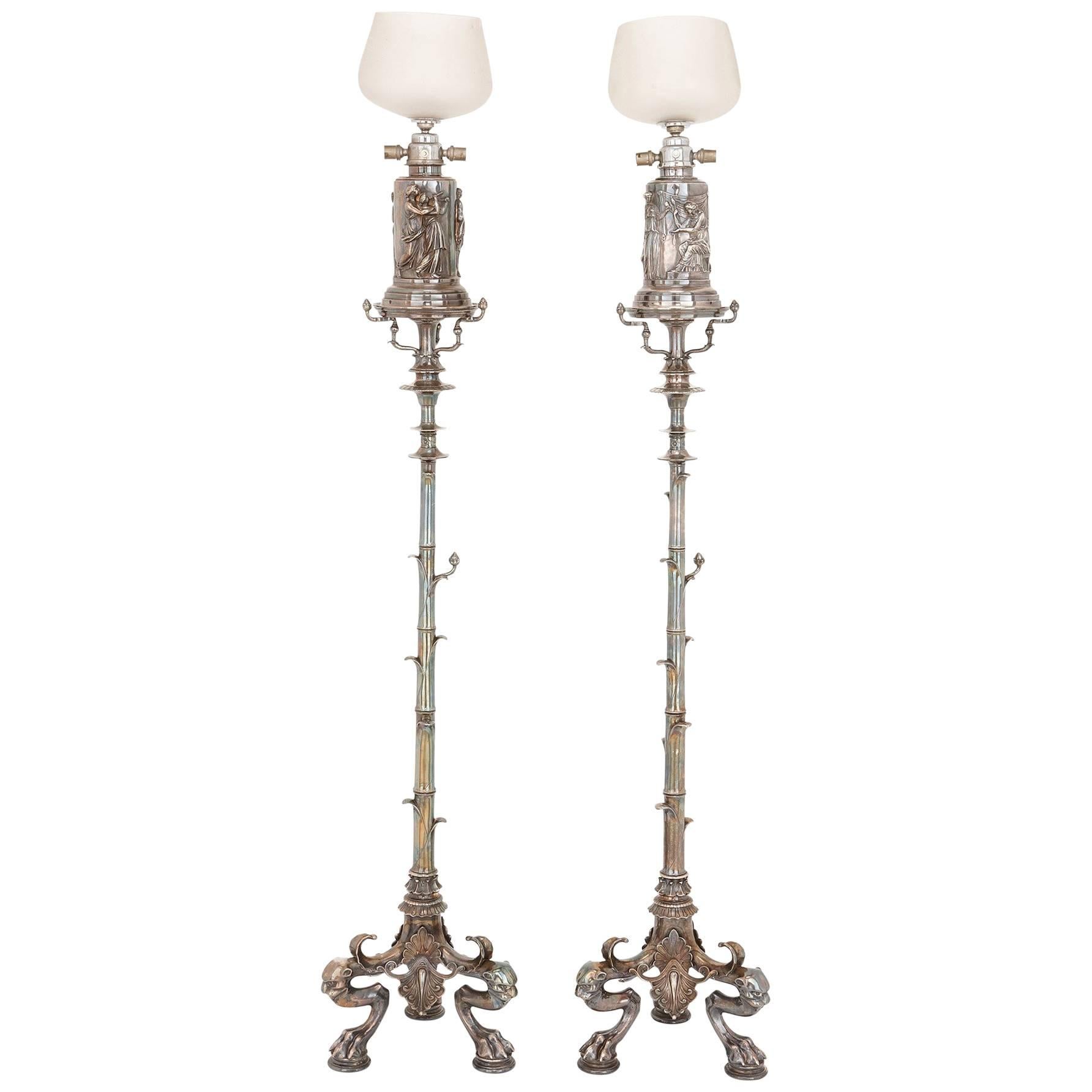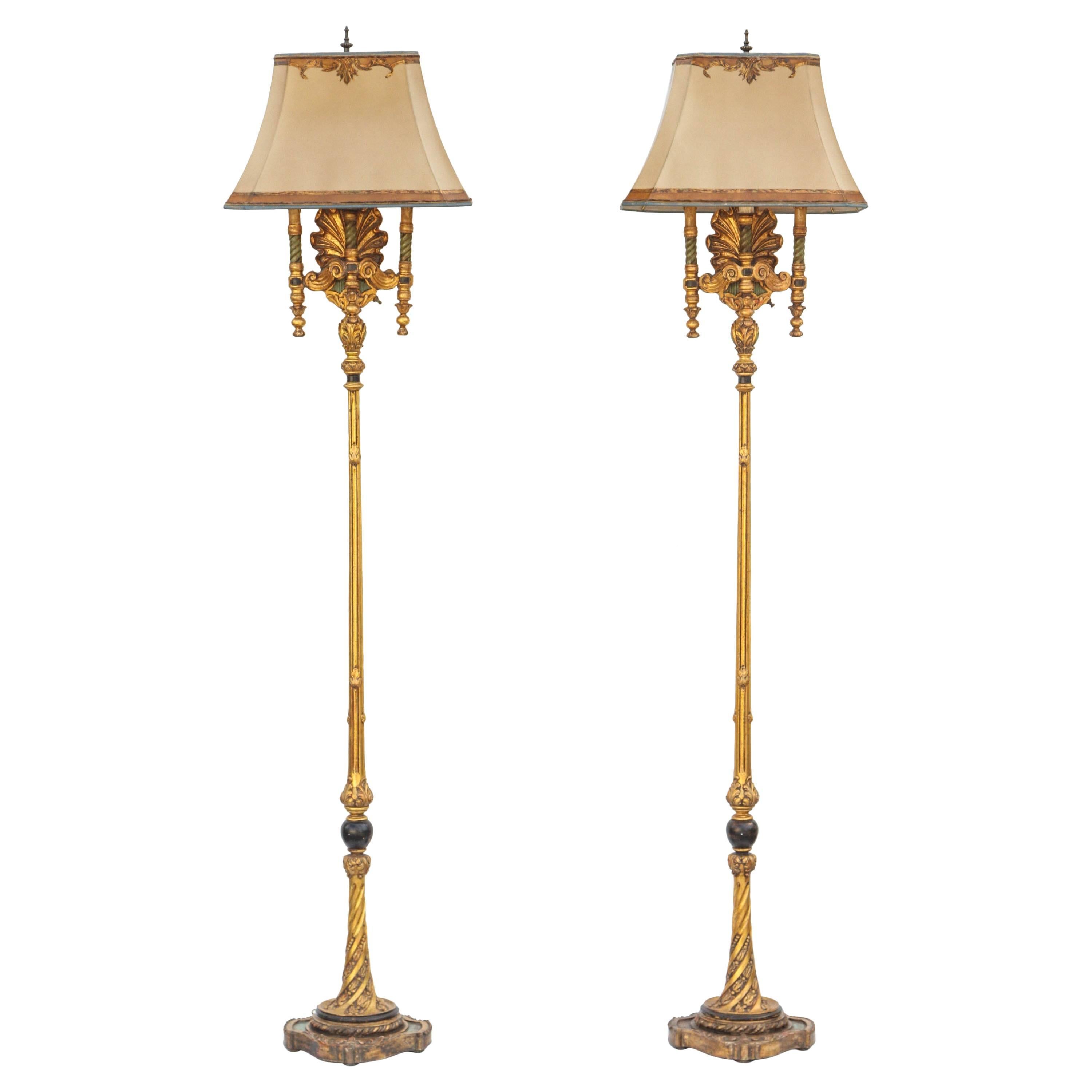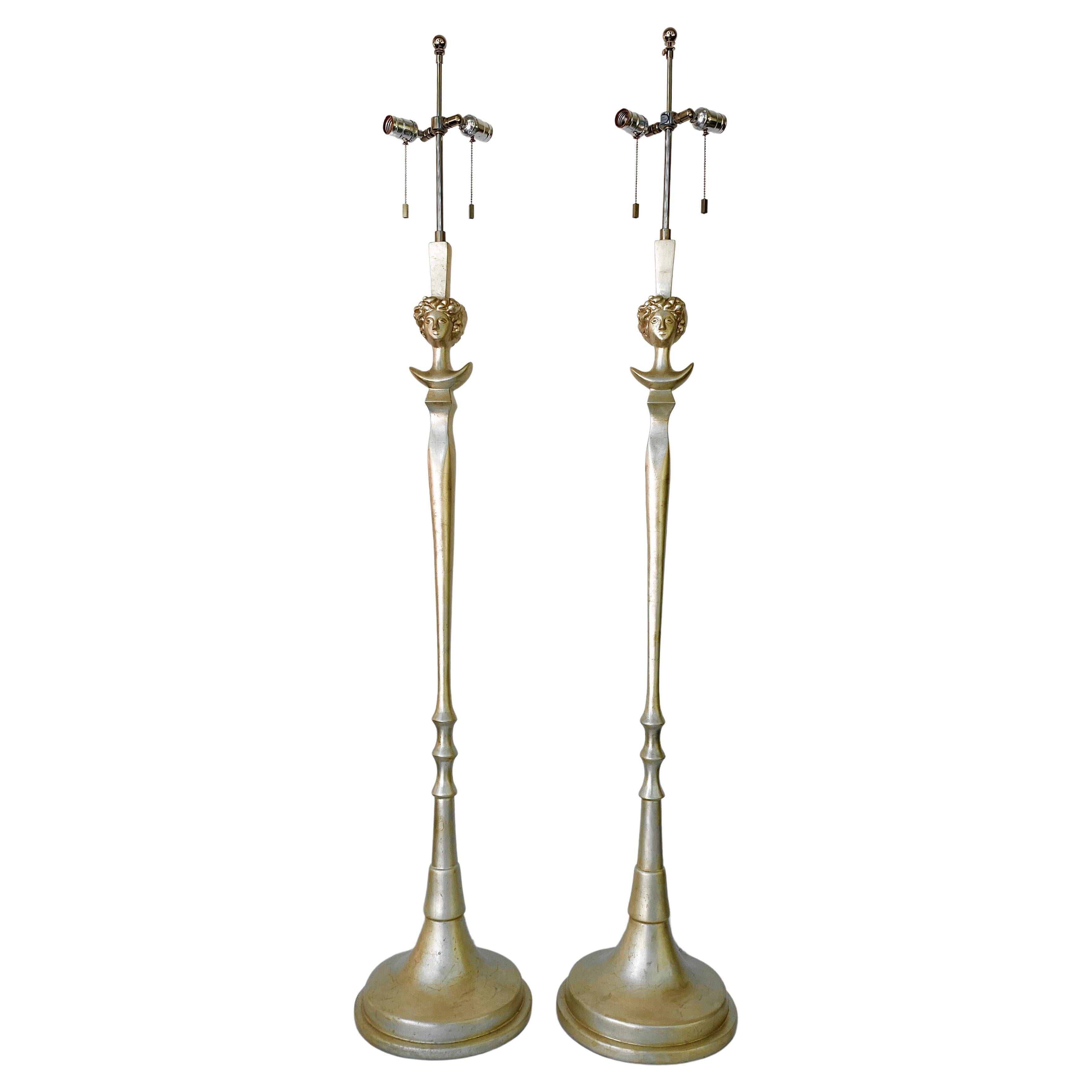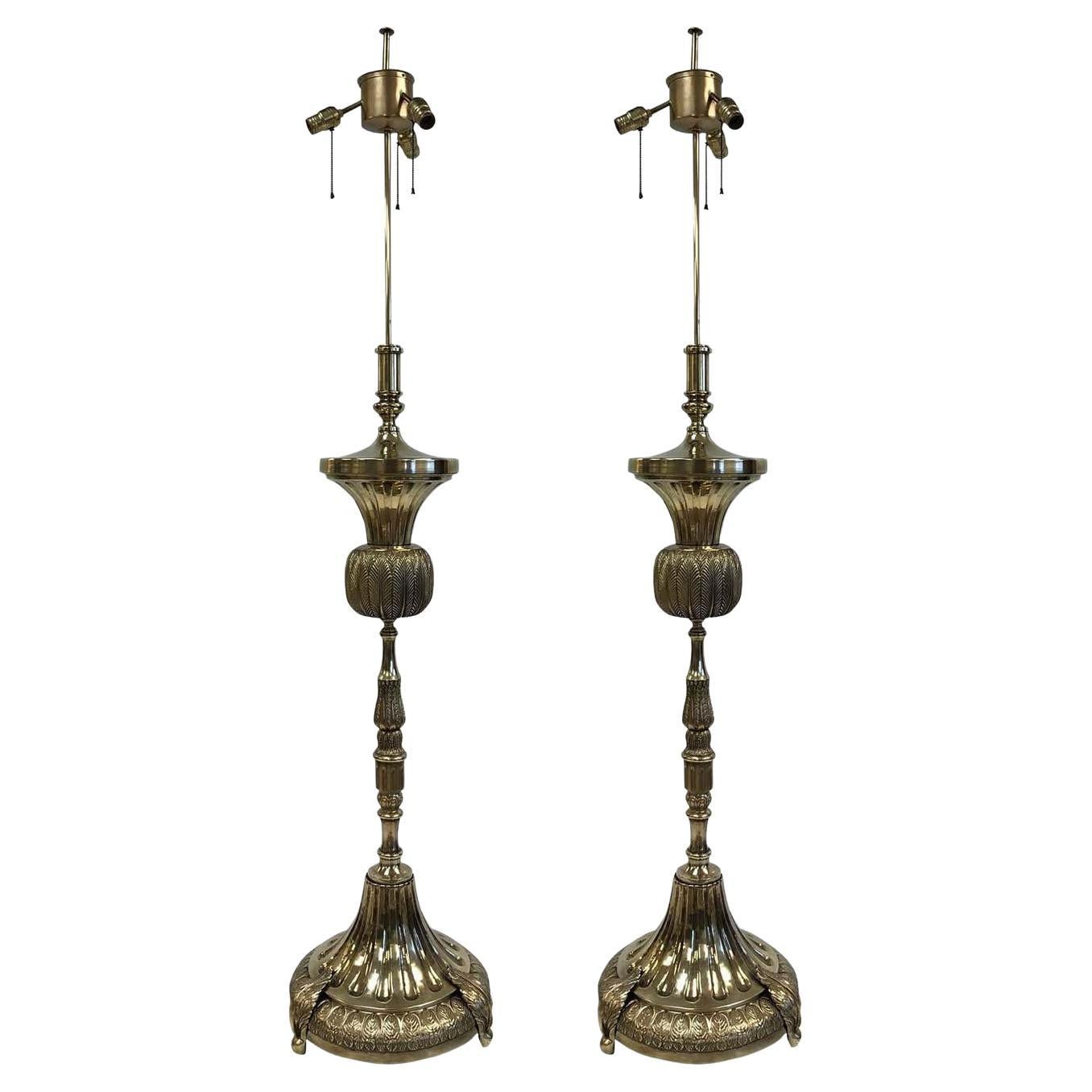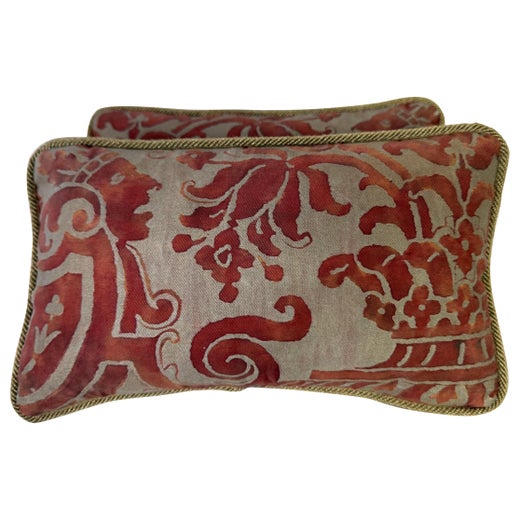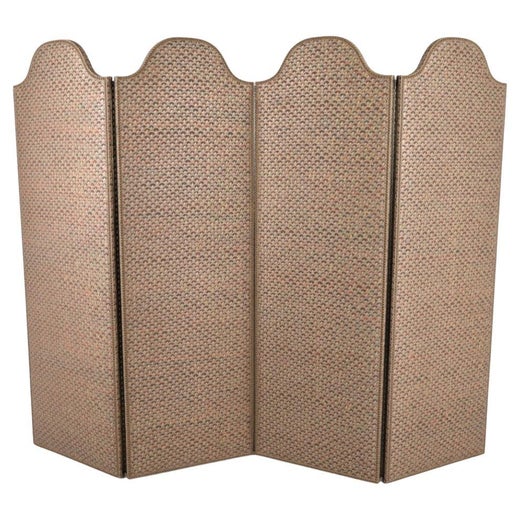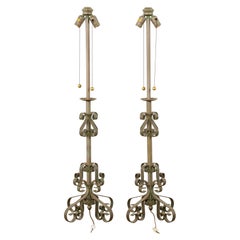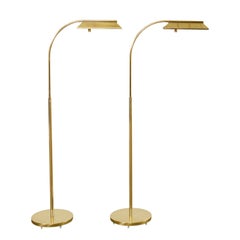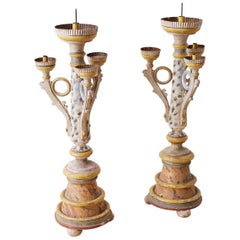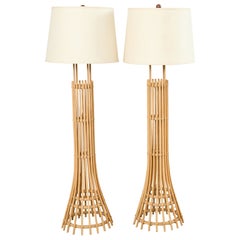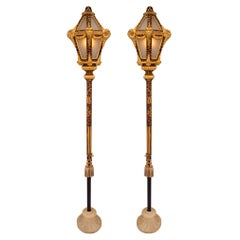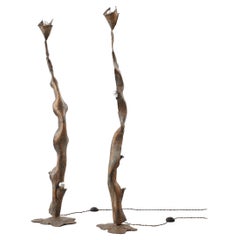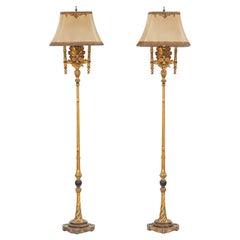Pair of Fortuny Venetian Cesendello Glass Floor Lamps
About the Item
- Creator:Mariano Fortuny (Designer),Fortuny (Maker)
- Dimensions:Height: 68 in (172.72 cm)Width: 14 in (35.56 cm)Depth: 11 in (27.94 cm)
- Sold As:Set of 2
- Power Source:Plug-in
- Voltage:110-150v
- Lampshade:Included
- Style:Bohemian (In the Style Of)
- Materials and Techniques:
- Place of Origin:
- Period:
- Date of Manufacture:Late 20th/Early 21st Century
- Condition:Wear consistent with age and use. Minor losses. Beautifully crafted with solid joinery and construction. Very good, well preserved condition. Age appropriate wear with worn fabric skirt and faded aged patina as expected. Losses to skirt fabric. One of the foot switches has a loss as shown.
- Seller Location:Rio Vista, CA
- Reference Number:1stDibs: LU1555247042522
Mariano Fortuny
Spanish fashion designer Mariano Fortuny was a true artist who worked with beautiful fabrics as his medium of choice. Although he showed talent in painting, sculpting, photography and architecture at an early age, fashion was where he really shined.
Fortuny was an innovator in the world of textile design. He drew on classical Greek tunics for his rich and interesting garments and worked with a revolutionary system for creating pleats (he was indeed proficient with product design, too, and developed lighting systems for theatre performances). He designed a range of clothing for his couture house, and today, vintage Fortuny evening gowns, gemstone-colored day dresses, coats and accessories like drawstring bags are known for their fine craftsmanship and signature elegance.
Fortuny was born Mariano Fortuny y Madrazo in 1871 in Granada, into a family of artists. His father died when Fortuny was only three years old, and his mother moved the family to Paris. As a child, Fortuny was fond of experimenting and figuring out how things worked. He even dyed pieces of fabric from his family's textile collection, which had been amassed from shops around Europe.
In 1889, the family moved again, this time to Venice. Here, Fortuny found inspiration in the past, which would influence his future designs. Not long after, the young Fortuny set off to travel the continent. In 1897, he visited Paris and fell in love with a dressmaker named Henriette Negrin. She became his muse, his wife and his creative partner — Negrin worked with Fortuny on clothing designs and fabrics — and the two settled in the French capital.
A lifelong inventor, Fortuny began patenting his creations in 1901. By 1934, he had registered more than 20 patents. At the same time, his fashion career was taking off. In 1907, he designed the Delphos gown with Negrin, which French novelist and essayist Marcel Proust described as "faithfully antique but markedly original." Fortuny had worked from his home until 1922 when increased demand required large-scale production. He opened a factory in Venice, where due to the scarcity of silk, he began experimenting with cotton.
In 1927, New York interior designer Elsie McNeill traveled to Paris to meet Fortuny and became his exclusive American distributor. She returned to the United States and introduced Fortuny's designs to New World audiences. Shops opened in Paris, New York and London. Toward the end of the 1930s, Fortuny returned to painting and stepped away from the busy fashion industry.
After Fortuny passed away in 1949, McNeill took over the label and continued running it until 1988, when it was purchased by the Riad family, who remain at the helm of Fortuny today.
Find vintage Mariano Fortuny clothing and textiles on 1stDibs.
Fortuny
Spanish fashion designer Mariano Fortuny was an innovator in the world of textile design. He drew on classical Greek tunics for his rich and interesting garments and worked with a revolutionary system for creating pleats. He designed a range of clothing for his couture house, and today, vintage Fortuny evening gowns, gemstone-colored day dresses, coats and accessories like drawstring bags are known for their fine craftsmanship and signature elegance.
Fortuny was a true artist who worked with beautiful fabrics as his medium of choice. Although he showed talent in painting, sculpting, photography and architecture at an early age, fashion was where he really shined.
Fortuny was born Mariano Fortuny y Madrazo in 1871 in Granada, into a family of artists. His father died when Fortuny was only three years old, and his mother moved the family to Paris. As a child, Fortuny was fond of experimenting and figuring out how things worked. He even dyed pieces of fabric from his family's textile collection, which had been amassed from shops around Europe.
In 1889, the family moved again, this time to Venice. Here, Fortuny found inspiration in the past, which would influence his future designs. Not long after, the young Fortuny set off to travel the continent. In 1897, he visited Paris and fell in love with a dressmaker named Henriette Negrin. She became his muse, his wife and his creative partner — Negrin worked with Fortuny on clothing designs and fabrics — and the two settled in the French capital.
A lifelong inventor, Fortuny began patenting his creations in 1901. By 1934, he had registered more than 20 patents. At the same time, his fashion career was taking off.
In 1907, he designed the Delphos gown with Negrin, which French novelist and essayist Marcel Proust described as "faithfully antique but markedly original." Fortuny had worked from his home until 1922 when increased demand required large-scale production. He opened a factory in Venice, where due to the scarcity of silk, he began experimenting with cotton.
In 1927, New York interior designer Elsie McNeill traveled to Paris to meet Fortuny and became his exclusive American distributor. She returned to the United States and introduced Fortuny's designs to New World audiences. Shops opened in Paris, New York and London. Toward the end of the 1930s, Fortuny returned to painting and stepped away from the busy fashion industry.
After Fortuny passed away in 1949, McNeill took over the label and continued running it until 1988, when it was purchased by the Riad family, who remain at the helm of Fortuny today.
On 1stDibs, find vintage Fortuny clothing and accessories.
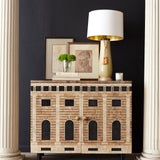
Erin Lane Estate is based in the San Francisco Bay Area, and its team of furniture restorers, art curators, professional appraisers and Asia specialists sources prime vintage and antique furniture from the finest estates in Northern and Southern California. Erin Lane Estate specializes in Hollywood Regency, McGuire, Chinese and Japanese pieces.
- ShippingRetrieving quote...Shipping from: Rio Vista, CA
- Return Policy
More From This Seller
View All20th Century American Mid-Century Modern Table Lamps
Brass, Iron, Wrought Iron
20th Century American Art Deco Floor Lamps
Metal, Brass, Iron
Antique 18th Century Italian Rustic Candlesticks
Zinc
20th Century Philippine Mid-Century Modern Floor Lamps
Wicker, Rattan
20th Century American Hollywood Regency Table Lamps
Brass
20th Century Italian Hollywood Regency Table Lamps
Brass
You May Also Like
Antique 18th Century Italian Floor Lamps
Wood, Giltwood
Vintage 1970s Italian Floor Lamps
Brass
Antique 19th Century French Neoclassical Floor Lamps
Bronze
Vintage 1930s Italian Floor Lamps
Vintage 1980s American Classical Greek Floor Lamps
Nickel
Antique 19th Century Neoclassical Floor Lamps
Bronze
